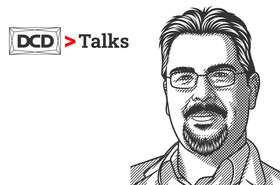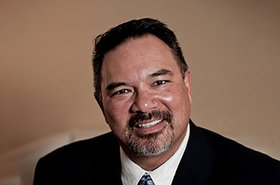Juggling availability, efficiency and cost in the data center is the universal challenge for organizations, especially as existing thermal systems begin to show their age.
Cooling accounts for approximately 38 percent of total energy consumption in a typical data center, and relying on aging, outdated cooling equipment only exacerbates these energy challenges.
Even if your equipment is only a few years old, your data center could be lacking the upgrades necessary to get the most out of your systems.
High-performance thermal management systems are significant investments, so it’s understandable some organizations can become squeamish at the thought of a full-on replacement of their legacy units.
Fortunately, new innovations in thermal management services, retrofits and upgrades can help save energy and lower operating costs without the need to replace entire units.
Small conversations that lead to big energy savings
Preventive maintenance can help ensure equipment performs optimally for years, and in some cases, decades. But preventative maintenance visits alone cannot help organizations unlock their full potential when it comes to energy and cost savings.
From cooling unit retrofit parts to turnkey installed upgrade services, working with an equipment provider’s thermal management services team can help organizations optimize their cooling systems by calculating return on investment (ROI), configuring the right solution, research and assist obtaining available energy rebates for a site, and managing installations.
This process often begins with a conversation with a services team representative who will visit the site to learn more about an organization’s specific needs. From there, they can offer recommendations for retrofits and upgrades, as well as best practices to optimize availability and achieve cost and energy savings.
Following the site visit and evaluation, service providers consider facility parameters, including utility rate, main fan horsepower, and the presence of a compressor, and use ROI tools to help estimate the time to payback and progress toward energy reduction goals.
For example, by adding state-of-the-art thermal control and monitoring software and eliminating drive belts and lowering fan speeds with EC plug fan retrofits, the ROI tool may potentially estimate an energy reduction of 74 percent for a certain site depending upon varying site factors. And the cost for the project could be recouped based on energy savings and improved PUE in an estimated 2-3 years.
Control retrofits and upgrades
Thermal management systems often are equipped with a basic level of control that allows data center personnel to set and monitor temperature, humidity, and airflow. Some may even provide information about component run times and alarm history.
These are critical insights to monitoring an environment and ensuring uptime, but adding more advanced, intelligent controls can further optimize cooling system performance and greatly contribute to enhanced energy efficiency.
From an energy standpoint, control upgrades can improve efficiency by as much as 10-20 percent for each individual cooling unit and up to 50 percent across the cooling system.
This is done by preventing unit fighting, or where some units heat and humidify while others cool and dehumidify, and by ensuring coordinated fan speed for an even, consistent flow. These upgrades enable the units to work together as a team.
Sensor upgrades
Standard thermal management systems rely on a single return air sensor to determine the optimal temperature for the supply air, which often results in overcooling or making the supply air colder than necessary.
Upgrading the return air sensor with up to six supply sensors positioned directly in the air stream provides exact temperature measurements that more precisely dictate the cooling capacity needed.
These additional remote sensors can be strategically placed to provide feedback to the fans, allowing the fans to respond with the correct amount of airflow. This delivers the lowest acceptable cooling capacity and fan speed, minimizing the energy used for cooling.
Simple actions to improve efficiency today
Another benefit to working with customer engineers who are deeply familiar with the components and design of thermal management systems is that they can offer measures and best practices to help improve efficiency and performance for your existing systems. These best practices include:
- Sealing the envelope of the room to retain cool air
- Using blanking panels to keep hot air in the hot aisle
- Optimally placing perforated tiles
- Managing cables to create a clear path for exhaust air
- Using the latest ASHRAE recommended set points
- Removing cardboard from the white space as it absorbs moisture and makes units work harder.
Once your organization chooses to move forward with new equipment upgrades and services, factory-trained experts can work with your team to put you in a position to unlock big savings and peace of mind knowing your thermal systems are performing at their full potential.
To learn more about how thermal management services and upgrades can help your organization achieve measurable energy savings, click here.
More from Vertiv
-

DCD>Talks Liquid Cooling with Drew Tuholski, Vertiv
Liquid cooling has never been hotter (excuse the pun). We chatted with Drew Tuholski, Offering Manager at Vertiv about everything liquid cooling
-

Sponsored Breathing new life into your data center
How to retrofit using disruptive technologies
-

Sponsored How liquid cooling can help organizations overcome high performance computing-related infrastructure challenges
Liquid cooling comes in a number of forms, but which is right for you? Vertiv technical director Fred Rebarber explains the different options

